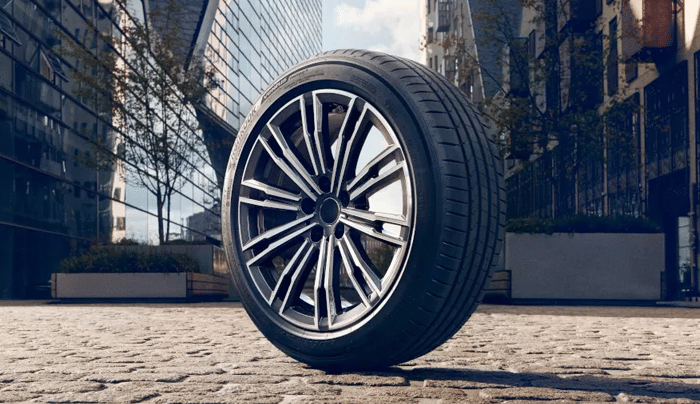Choosing between 235/55R20 and 265/65R17 tires involves considering the unique advantages each size offers in terms of performance, comfort, and handling. While both of these sizes are popular among SUVs, trucks, and crossovers, they suit different driving conditions and vehicle needs. Below, we’ll explore the key differences and benefits of each tire size to help you determine which is the right fit for your vehicle and driving style.
1. Tire Width and Contact Patch
The width of each tire size is one of the primary differences. The 235/55R20 is 235 millimeters wide, whereas the 265/65R17 is wider at 265 millimeters. A wider tire, like the 265/65R17, creates a larger contact patch with the road, offering improved grip and stability, especially in off-road conditions or during cornering. On the other hand, the 235/55R20, with its narrower profile, is often better suited for fuel efficiency and lighter handling, making it an ideal choice for drivers who stick primarily to paved roads.
2. Aspect Ratio and Ride Comfort
The aspect ratio, or the height of the sidewall as a percentage of the tire width, differs significantly between these sizes. The 235/55R20 has an aspect ratio of 55, while the 265/65R17 has a taller sidewall with an aspect ratio of 65. This difference affects the ride quality: the taller sidewall of the 265/65R17 allows it to absorb road impacts better, providing a more cushioned and comfortable ride. This makes it preferable for drivers who often encounter rough roads or off-road conditions. The 235/55R20, with its shorter sidewall, enhances handling responsiveness and can provide a sportier, more controlled feel on smoother surfaces.
3. Rim Diameter: 20 Inches vs. 17 Inches
Another significant distinction is the rim diameter, with the 235/55R20 designed for a 20-inch wheel and the 265/65R17 for a 17-inch wheel. Larger wheels, like the 20-inch, are common on newer SUV models and are chosen for their modern, sporty appearance. They also contribute to better handling on highways. However, the 17-inch wheel size of the 265/65R17 allows for a thicker sidewall, enhancing shock absorption and providing added durability in rugged conditions.
4. Handling and Stability
The 235/55R20 size, with its narrower width and lower aspect ratio, is built for stability and precise handling on paved surfaces, making it a suitable choice for highway and urban driving. Its shorter sidewall and larger rim diameter allow for more precise control, particularly when cornering. In contrast, the 265/65R17 provides excellent stability for off-road driving and uneven terrain due to its wider tread and taller sidewall, which also makes it a good fit for trucks and SUVs designed for both city and off-road use.
5. Fuel Efficiency
The 235/55R20 size has a slight edge in fuel efficiency due to its narrower width and lighter design. A narrower tire produces less rolling resistance, which means the vehicle requires less power to maintain speed, leading to better fuel economy. In comparison, the 265/65R17 may experience slightly higher rolling resistance due to its increased width and overall weight, but this is often balanced by the added grip and durability on rougher surfaces.
6. Versatility and Road Conditions
The 265/65R17 is a versatile choice for those who frequently drive on a mix of surfaces, from paved roads to rugged trails. The wider tread and taller sidewall provide added traction and durability, making it a reliable choice for SUVs and trucks used for both daily driving and off-roading. Meanwhile, the 235/55R20 is best suited for drivers who prioritize on-road performance, smoother handling, and modern aesthetics. This tire size works well on highways and in urban settings where a lower profile, responsive handling, and a more stylish look are desirable.
7. Aesthetic and Fitment
In terms of appearance, the 20-inch rim of the 235/55R20 lends a sleek, sporty look to vehicles, often seen on crossover SUVs and luxury models. This size fills out the wheel well and provides a more modern aesthetic that appeals to drivers looking for style along with functionality. The 265/65R17, with its smaller rim and larger tire profile, gives vehicles a rugged, all-terrain look. It’s popular among off-road enthusiasts and those who appreciate a solid, reliable appearance that matches the performance expectations for trucks and SUVs.
Final Thoughts
The 235/55R20 and 265/65R17 tire sizes cater to different driving needs and preferences. If you’re looking for a tire that provides fuel efficiency, precise handling, and a modern, sporty look, the 235/55R20 may be the best option for your SUV or crossover. On the other hand, if you prioritize durability, comfort on rough terrain, and versatility for both on- and off-road conditions, the 265/65R17 is an excellent choice, especially for trucks and larger SUVs. By understanding these differences, you can select the tire size that best matches your vehicle’s demands and your unique driving style.








